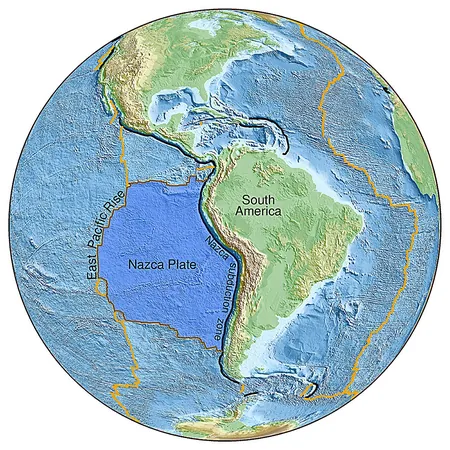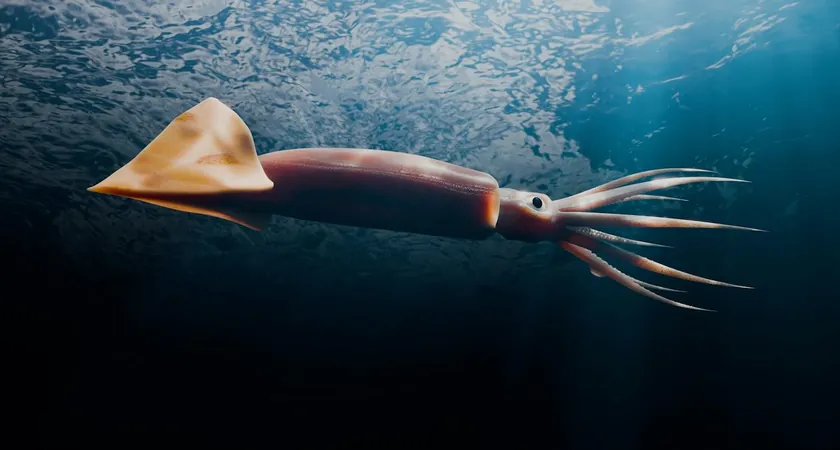
New Evidence Suggests Dinosaurs Faced Multiple Asteroid Impacts
2024-10-03
Overview of the Discovery
Scientific breakthroughs have illuminated the catastrophic events leading to the extinction of the dinosaurs, suggesting that the infamous asteroid impact was not an isolated occurrence.
Recent underwater explorations near the coast of Guinea have unveiled a massive crater, evidence of another asteroid collision around the same time that dinosaurs roamed the Earth, roughly 66 million years ago.
Details of the Crater
Using advanced 3D seismic imaging technology, researchers have mapped a crater measuring over five miles in diameter, attributed to an asteroid approximately a quarter of a mile wide that impacted the Earth at speeds approaching 45,000 miles per hour.
Though this asteroid was smaller than the one associated with the mass extinction event, it was still devastating enough to leave significant geological traces.
Insights from Dr. Uisdean Nicholson
Dr. Uisdean Nicholson, a marine geologist at Heriot-Watt University, who first identified the Nadir crater in 2022, described the findings as "exquisite."
The detailed scans of the crater reveal geological mysteries buried 300 meters beneath the seabed.
"There are around 20 confirmed marine craters worldwide, but none has been captured with such clarity," he pointed out.
Impacts of the Collision
The research team discovered that the impact created massive tremors that liquefied sediments beneath the ocean floor, leading to faults and landslides that could be traced thousands of miles outside the crater rim.
More alarmingly, the impact could have unleashed colossal tsunamis exceeding 800 meters in height, potentially sweeping across the Atlantic Ocean and affecting distant shores.
Significance of the Findings
Although researchers have yet to determine the exact timing of this asteroid impact, the implications are profound.
It raises the possibility that a cluster of asteroid impacts may have struck the Earth during the late Cretaceous period, leading to the environmental cataclysms that wiped out the dinosaurs.
The more famous asteroid responsible for the extinction created the gargantuan Chicxulub crater, which spans a staggering 100 miles across in Mexico's Yucatan Peninsula.
Comparative Analysis with Other Events
Dr. Nicholson likened the scale of these ancient impacts to the Tunguska event in 1908, when a 50-meter asteroid exploded in the atmosphere over Siberia.
He emphasized that the new 3D seismic data will offer an unprecedented opportunity to explore theories about impact craters, refine models of crater formation in marine settings, and deepen our understanding of the dire consequences of such destructive cosmic events.
Looking Ahead
As we delve deeper into the mysteries of our planet's past, these discoveries could redefine our comprehension of mass extinction events and the forces that have shaped life on Earth.
Scientists continue to investigate, and the implications of multiple asteroid impacts could change everything we thought we knew about the end of the age of dinosaurs.
What other secrets remain buried beneath the waves? Stay tuned!




 Brasil (PT)
Brasil (PT)
 Canada (EN)
Canada (EN)
 Chile (ES)
Chile (ES)
 España (ES)
España (ES)
 France (FR)
France (FR)
 Hong Kong (EN)
Hong Kong (EN)
 Italia (IT)
Italia (IT)
 日本 (JA)
日本 (JA)
 Magyarország (HU)
Magyarország (HU)
 Norge (NO)
Norge (NO)
 Polska (PL)
Polska (PL)
 Schweiz (DE)
Schweiz (DE)
 Singapore (EN)
Singapore (EN)
 Sverige (SV)
Sverige (SV)
 Suomi (FI)
Suomi (FI)
 Türkiye (TR)
Türkiye (TR)